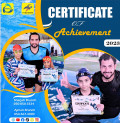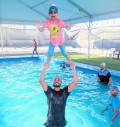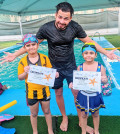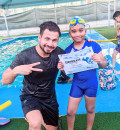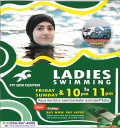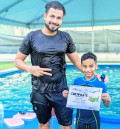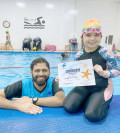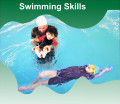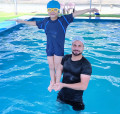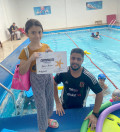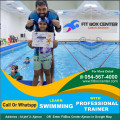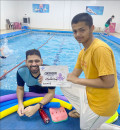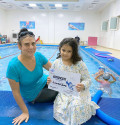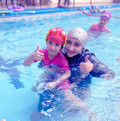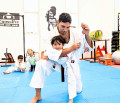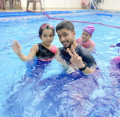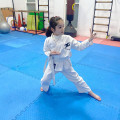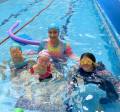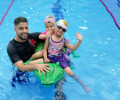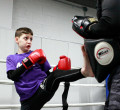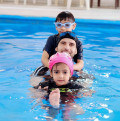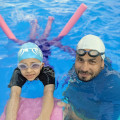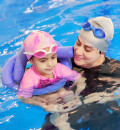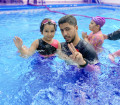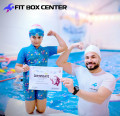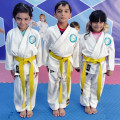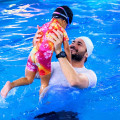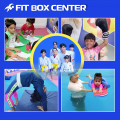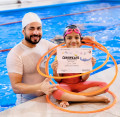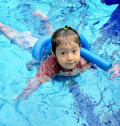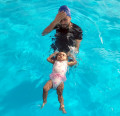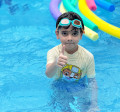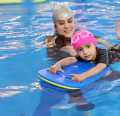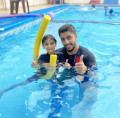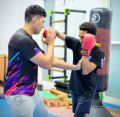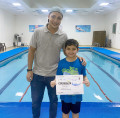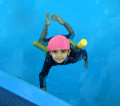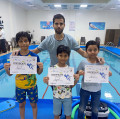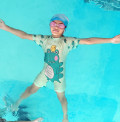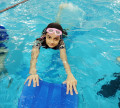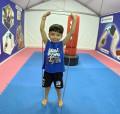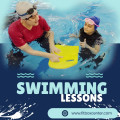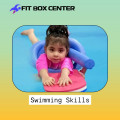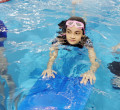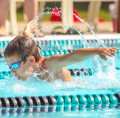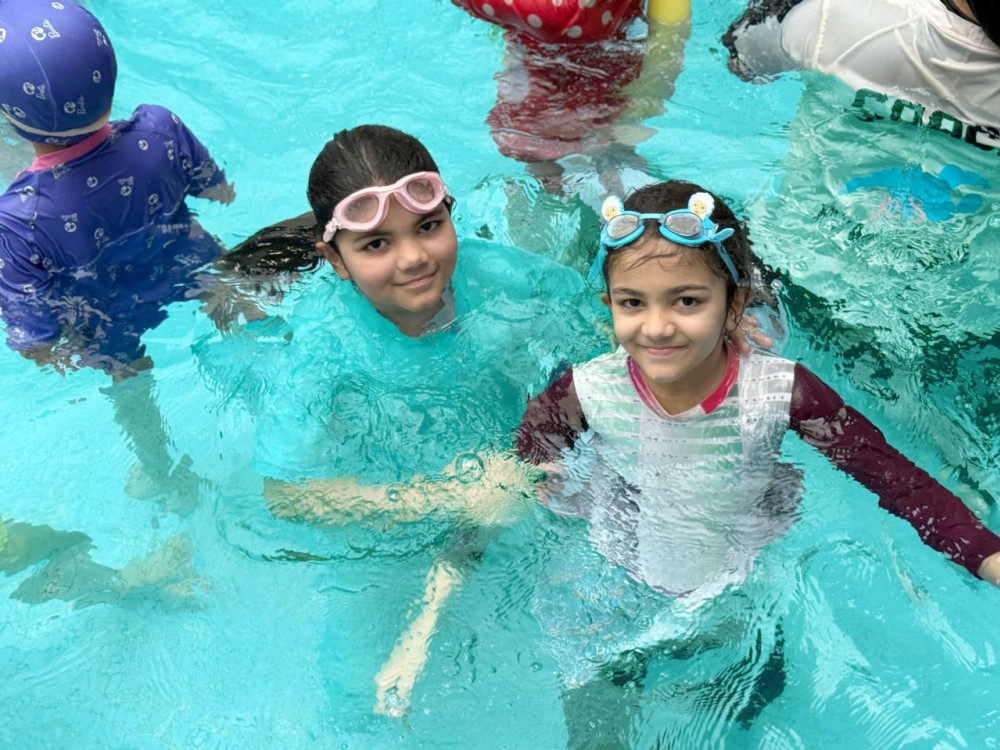
Swimming for Kids: The Essential Skills and the Magic of the Water
2024-09-05 - swimmingIntroduction to Swimming for Kids
Swimming is more than just a fun activity for kids—it's an essential life skill that empowers them with confidence, coordination, and, most importantly, safety in and around water. From splashing in the pool to swimming laps, teaching kids how to swim early can open up a world of adventure while keeping them safe.
Why Swimming is an Essential Life Skill for Kids
Teaching kids to swim isn't just about learning a new hobby; it's about giving them the tools to be safe around water. Whether it’s playing at the beach or boating on a lake, kids are frequently around water, and knowing how to swim helps prevent accidents. Swimming also improves physical fitness, coordination, and respiratory health.
Benefits of Teaching Children to Swim Early
Starting swimming lessons at a young age has tremendous benefits. Young children are naturally curious and fearless, and swimming lessons give them the skills they need to safely explore the water. Early swimmers tend to develop better motor skills, have stronger muscles, and build a healthier relationship with physical activity overall.
Understanding Water Safety
Safety around water is critical, especially for young swimmers. As much as kids need to enjoy the water, they must understand its dangers and how to handle them.
Teaching Kids the Importance of Water Safety
Before diving into swimming techniques, children need to understand the basics of water safety. This includes learning how to stay calm, knowing where it’s safe to swim, and understanding the need to swim with an adult present. Simple lessons like "no running around the pool" or "always ask for permission before entering water" are foundational to water safety.
Lifeguard Supervision and Adult Guidance
A major part of water safety is ensuring there’s always adult supervision. Whether at a public pool, the beach, or even in a backyard pool, adult guidance and the presence of lifeguards are essential for ensuring children’s safety in the water.
Fundamental Swimming Skills Every Child Should Learn
Swimming involves more than just flailing around in water. It’s a series of coordinated movements that need practice and guidance.
Floating: The Foundation of Swimming
The first step in teaching kids to swim is showing them how to float. Floating helps them relax in the water and reduces the panic that comes with sinking. Learning to float on the back and stomach is a critical skill that lays the groundwork for more advanced techniques.
Kicking Techniques to Propel Through Water
Once kids are comfortable floating, they can start learning to kick. Kicking helps them move through the water, and teaching them proper kicking techniques ensures they’re moving efficiently. Techniques like flutter kicks build strength in the legs and are great for freestyle swimming.
Arm Movements for Smooth Strokes
Kids need to synchronize their arm movements with their kicks to swim efficiently. Teaching simple strokes, like the front crawl or backstroke, helps kids develop rhythm and balance in the water.
Breathing Techniques to Build Confidence
Proper breathing techniques are crucial for swimming, especially as kids learn to swim longer distances. Learning how to inhale above the water and exhale into it helps kids stay calm and coordinated, making swimming less exhausting and more enjoyable.
Learning Through Fun: Games and Exercises
Kids often learn best through play, and swimming is no exception. Incorporating games and exercises into swimming lessons can make learning enjoyable.
Water Games that Build Confidence
Games like "Sharks and Minnows" or "Treasure Hunt" encourage kids to practice swimming while having fun. These games can also help build their confidence as they focus less on technique and more on enjoying themselves in the water.
Exercises to Strengthen Swimming Muscles
Simple pool exercises, like swimming laps with a kickboard or practicing strokes, help strengthen the muscles used in swimming. These exercises build endurance and improve the effectiveness of their movements.
Overcoming Fear of Water
Many kids start with a natural fear of water, but with patience and the right approach, this fear can be overcome.
Gradual Steps to Build Trust with Water
Start by having kids dip their toes in and gradually work up to full submersion. The more positive experiences they have, the more comfortable they’ll feel. Progressing at their own pace is key to building trust.
The Role of Patience in Building Confidence
Some children need more time to feel at ease in the water, and that’s perfectly fine. Patience, encouragement, and practice help kids gain confidence, ensuring they feel safe and secure as they learn.
Swimming Styles for Kids
Once kids have mastered the basics, they can start exploring different swimming styles.
Basic Freestyle
Freestyle, also known as the front crawl, is one of the easiest strokes for kids to learn. It’s fast and simple, focusing on alternating arm strokes and a flutter kick.
Backstroke
The backstroke is another straightforward style for kids to learn. It helps them practice balance and coordination, as they float on their back and kick through the water.
Breaststroke
The breaststroke requires a bit more technique but is excellent for improving coordination. Kids need to time their arm strokes with their leg movements to glide smoothly through the water.
Butterfly: When to Introduce Advanced Styles
The butterfly stroke is one of the more advanced styles. It's a powerful, rhythmic stroke that should be introduced once a child has mastered other swimming techniques.
Choosing the Right Swimming Lessons
Swimming lessons come in many forms, so finding the right fit for your child is essential.
Group Lessons vs. Private Lessons
Group lessons provide a social environment where kids can learn with others their age. However, private lessons offer individualized attention, which can be beneficial for kids who need extra guidance or are more advanced swimmers.
What to Look for in a Swim Instructor
A good swim instructor is patient, knowledgeable, and great with kids. Look for someone certified in water safety and CPR, and who has experience teaching children.
Conclusion: The Lifelong Value of Learning to Swim
Teaching kids to swim not only keeps them safe but also gives them a skill they can enjoy for a lifetime. Whether they’re swimming for fun, fitness, or competition, the lessons they learn in the water will stay with them forever..




























